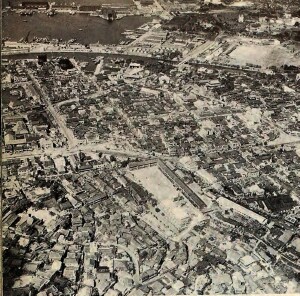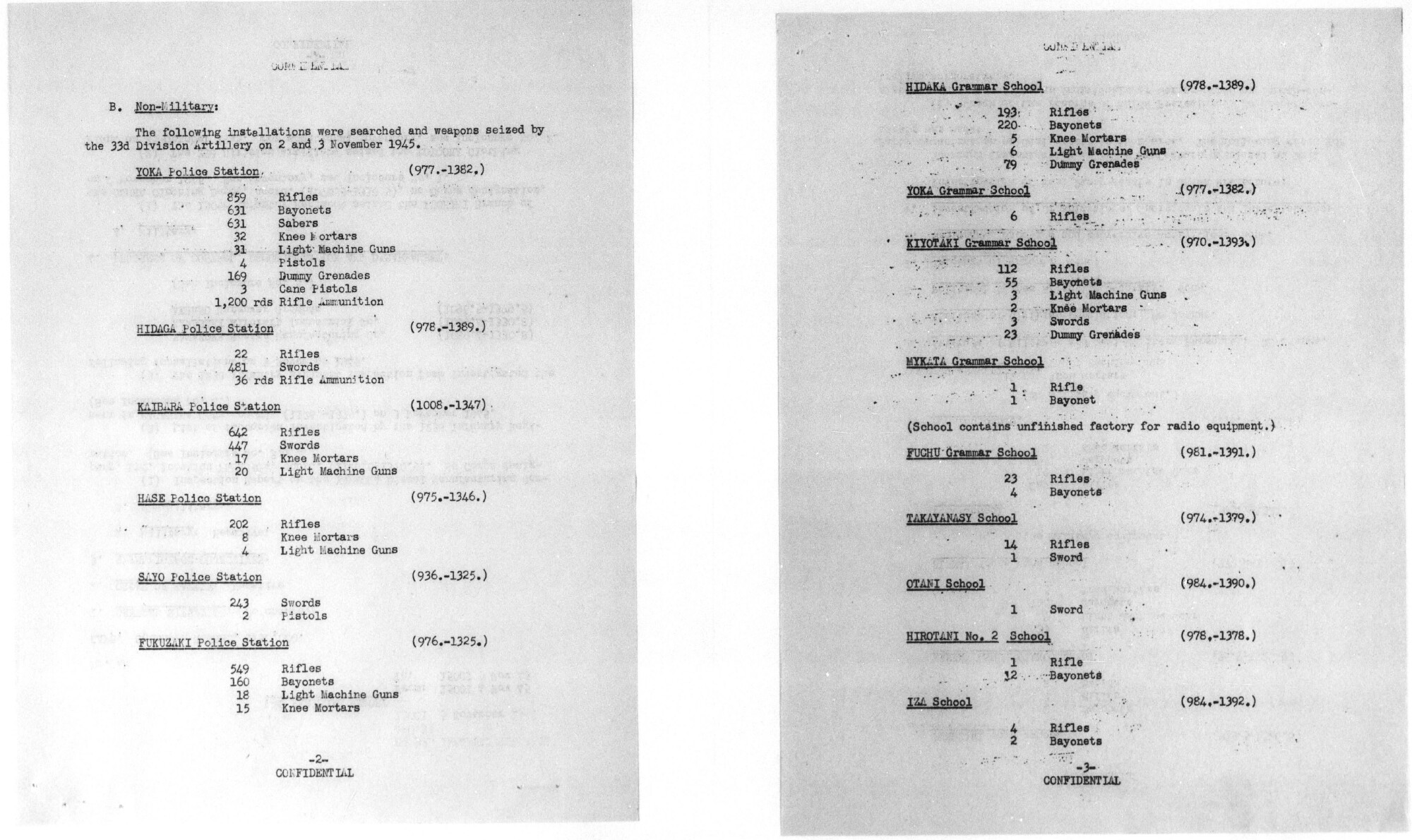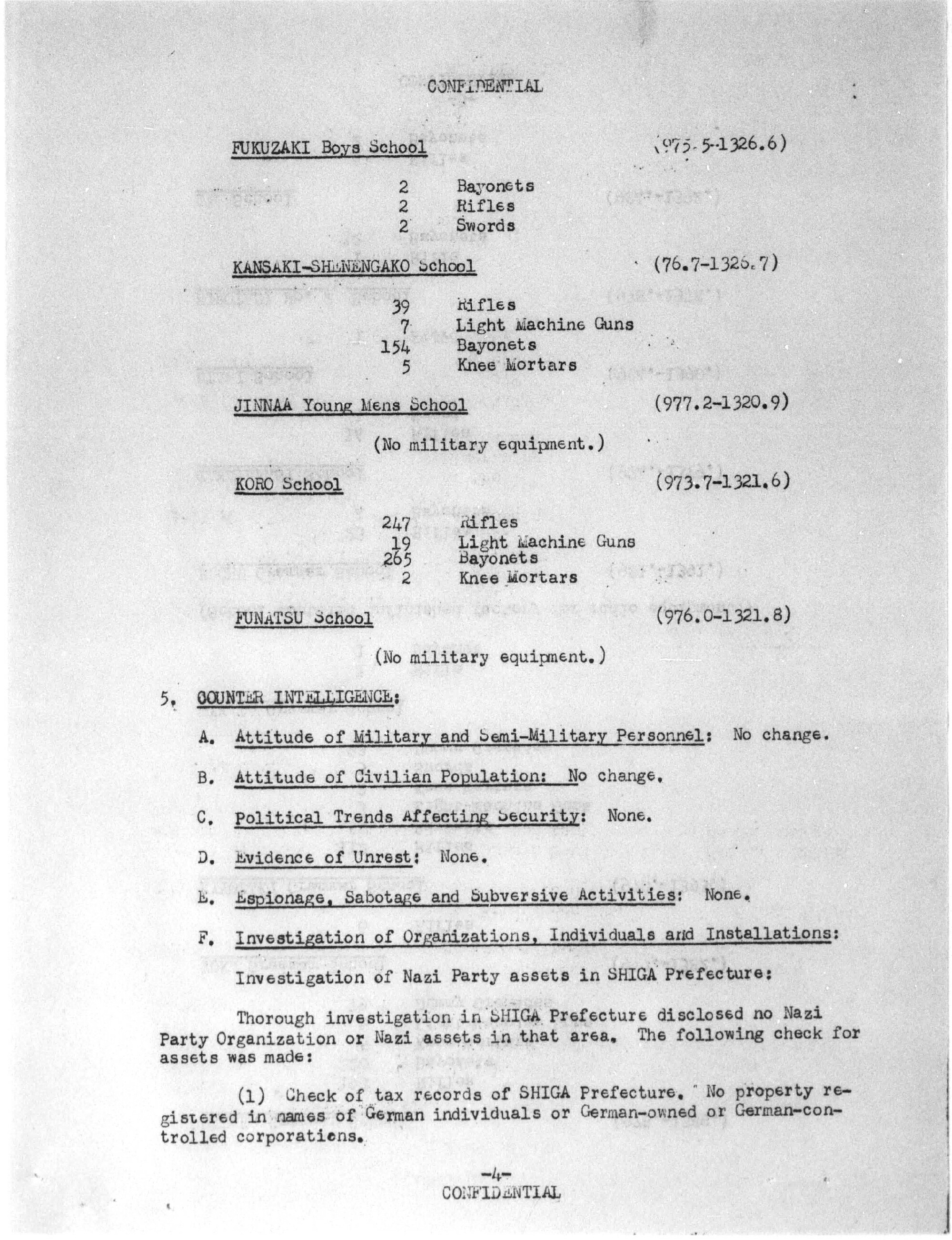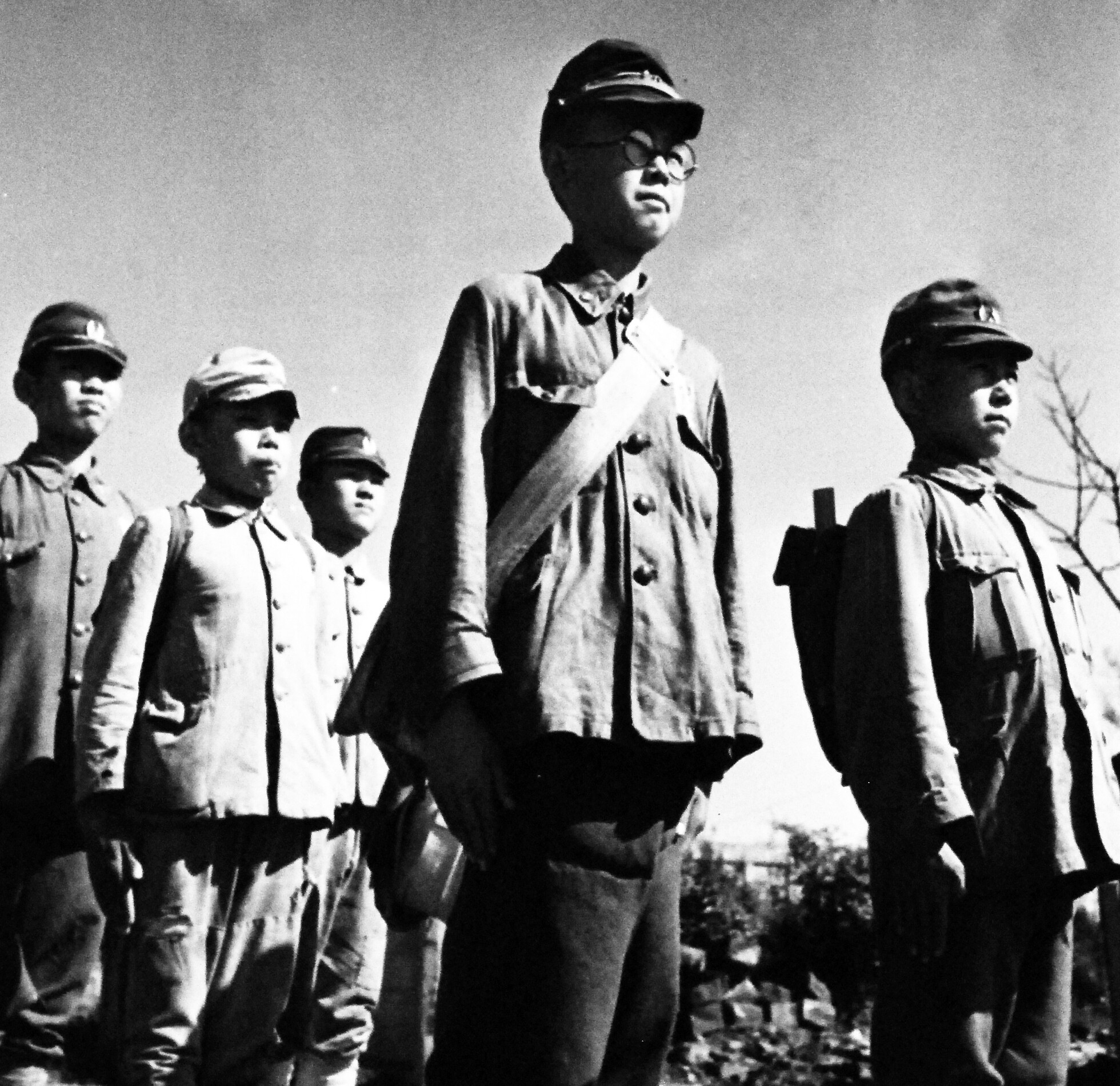Commemorating 80 years since arrival of Marines in Sasebo
| Background | WWII related |
Occupation Cruise Books |
| Sasebo #18 Camp | Repatriation |
Main Index |
NOTE: Please credit this website for any data you use
Background
The word "Sasebo" (means "leaf port"; also pronounced "Saseho" long ago due to Japanese sailors' preference) is probably from the name of a Japanese ruler in the area, Isamu Sasebo, one of the families in the Matsuura clan (his name originally was Matsuura Tango Genzaburo Isamu). He is said to have built Sasebo castle in the early 1500's on a hill in an area now called Hachiman-cho. It is thought that the castle was later moved to Hanaguri, now Hotate Park.The town just above Sasebo, Ainoura, was considered to be of more importance and therefore developed earlier. However, the famous Naval admiral, Heihachiro Togo, thought the Sasebo harbor ideal for a naval installation when he visited there in August 1883. After consideration of two other options in Imari and Hirado, Sasebo was chosen in May 1886 and construction work began in January 1887, with completion in July 1889. Thereafter, the port was vital during several wars, e.g. the First Sino-Japanese War, the Russo-Japanese War, World War I, and World War II.
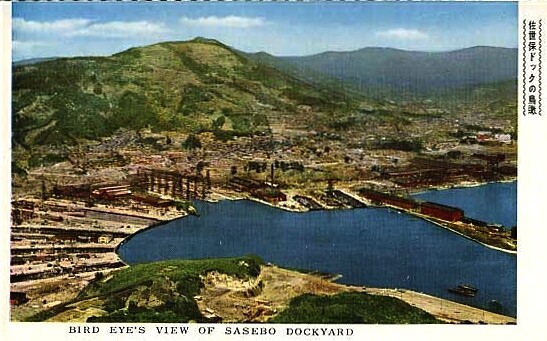
Sasebo Naval Arsenal 1930
Here is a very interesting table of all Imperial Japanese Navy ships, in Japanese only. Click on 建造所 button to sort on shipyard -- Sasebo will be listed as 佐世保海軍工廠. Note that the I-401 super-submarine was built in Sasebo. This submarine was capable of carrying three aircraft and was intended for use against US cities and the Panama Canal. Of paramount concern was that these aircraft might contain bio-weapons. Fortunately, more level-headed Japanese strategists scrapped that idea! See this special page on the I-400 super-subs.
Other mighty warships were at the Sasebo Naval Arsenal as well:
"The Imperial Japanese Navy
employed some 50,000 people at the Sasebo Naval Arsenal at the peak of
World War II, constructing and refitting destroyers, light cruisers,
submarines and other various naval vessels. The 21st Naval Air Arsenal
(Dai-Nijuichi Kaigun Kokusho), established jointly at Sasebo and Omura,
produced a total of 966 aircraft. The facilities at Sasebo were used
for repairs on the battleships Yamato
and Musashi during the Pacific
War."
Part 2 of this document has a lot of good info with photos and diagrams of the Sasebo Naval Base Air Defense Center, similar to our NORAD in the US:
More can be found about this center, open to the public since March 2017, here at The Japanese Home Front III: Sasebo Air Defense Command Center. David Krigbaum has many other interesting articles in this series at his website.
Some interesting old maps of the Sasebo area, known long ago as Hizen:
 |
One of the earliest
maps of Japan (1625), shown as an archipelago rather than a single
island. Kyushu consists of only two regions, Fongo in the north and
Bungo in the south, though the former is actually Bungo. Hirado
(Firando), Hizen (Figen), Buzen (Bungen) and Chikugo (Checuge) are
shown distinctly. Oddly, Nagasaki (est. 1571) is not shown. Before
Nagasaki became the main port and known as "Little Rome," trading ships
would go to Bungo (Oita), Hirado, Yokoseura (Saikai) and Fukuda (just
west of Nagasaki). Kuchinotsu in south Shimabara was also visited. |
 |
Drawn by Dutch scholar Arnoldus
Montanus (van den Berg? van Bergen?) and published in 1669. All of
Kyushu was called Bungo. Hizen 1 - Shows Hakata (Facata) to the north, Hirado (Firando) Island, Ainoura (Agnora), and Ushinokubi (Ousinocubi; "cow neck"). Hizen 2 - Shows southern area to Nagasaki (Nangasacqui) and Kagoshima (Cangoxuma). |
 |
Produced by Kaempfer in 1690. Shows all of Hizen
(Fidsen), from Nagoya Castle (Nagaja) to Nomozaki. Sasebo area shows
only Hinoura (Finoura) and Oshinokubi (Takashima Island west of Sasebo
Bay, lighthouse is called Ushigakubi). |
 |
Japanese map c. 1690. Shows Chikuzen Hirado Castle in
upper left. Sasebo area points are Emukae, Saza, Ainoura, and Hiu. Note
Kujukushima shown as numerous dotted islands. The sea route in red is
marked with reference to "Ushinokubi," used as a navigational point. |
 |
Map produced in 1707 (by Pieter van der Aa?). Hirado
(Firando) is shown in relatively correct location and Hizen (Figen) to
the east, but other locations obviously incorrect. Nagasaki is noted as
Langasacke. |
 |
Map of Japan from 1795 with "New and Accurate Descriptions" by Jesuit Antonio Cardim (image from Harvard Univ.), showing church locations on Kyushu - Hirado (Firando), Nagasaki (Nangusaqui), Omura (Vomura), Isahaya (Isafai), Hizen (Fiozon?). |
 |
Thomson map of Japan (1815) showing Hizen (Fidsen)
area, notably Hirado (Firanda), Hinoura (Finura), and Ushinokubi
(Osinokubi). Two unknown towns are Awo and Kissima. |
 |
Japanese map of Hirado
and Nagasaki areas, produced by the famous surveyor/cartographer
Tadataka Ino and, after his death in 1818, completed by his team in
1821. Ushinokubi is the only point noted in the vicinity of Sasebo. |
 |
Another map by Tadataka
Ino, edited by his helper, Kageyasu Takahashi, in 1827. This may be the
first time the village was identified on a map, and is written as
"Saseho." |
 |
Colton map of Japan (1855) showing Hizen (Fizen).
Hirado is spelled Firato. Mt. Tara is the highest point in Hizen, noted
probably for navigational purposes. |
| Additional
old maps of Sasebo area, 1685 to 1897 - the name Sasebo first
appears on a map in 1874 (page 15). |
|
World War II related
Mostly dealing with Sasebo target data and air raids (佐 世保空襲). See PDF's below (with corresponding dates) for full data on images. |
Fukuoka area map 1944-11 | |
 |
Sasebo area map 1945-03 | |
 |
Sasebo area map 1945-03a | |
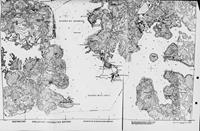 |
Sasebo area map 1945-03b | |
 |
Sasebo target area 1945-04 | |
 |
Sasebo targets 2539 754 1945-04-21a | |
 |
Sasebo targets 2539 754 1945-04-21b | |
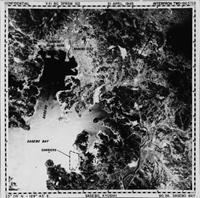 |
Sasebo carriers 1945-04-21 | |
 |
Sasebo ko (harbor) 1945-04-30a | |
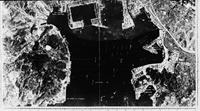 |
Sasebo ko 1945-04-30b | |
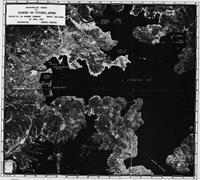 |
Sasebo ko 1945-04-30c | |
 |
Sasebo inner harbor 1945-04-30 | |
 |
Sasebo naval dockyards 1945-04-30 | |
 |
Sasebo oil storage 1945-04-30 | |
 |
Sasebo shipping report 4 1945-04-30 | |
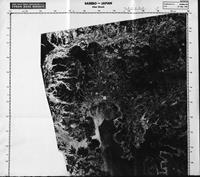 |
Sasebo area 1945-05-21a | |
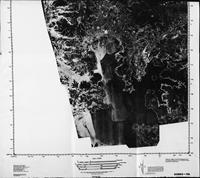 |
Sasebo area 1945-05-21b | |
 |
Sasebo naval arsenal
1945-05-23 See: Sasebo Naval Arsenal and Engineering Dept Report 1945-07-17 |
|
 |
Sasebo and vicinity | |
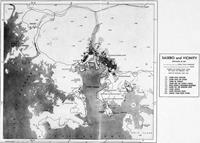 |
Sasebo vicinity 1944-06 | |
 |
Sasebo vicinity incendiary zone 1944-06 | |
 |
Sasebo vicinity mosaic d2 1944-06 | |
 |
Sasebo vicinity mosaic da 1944-06 | |
 |
Sasebo vicinity mosaic e 1944-06 | |
 |
Sasebo 1945-06-20 | |
 |
Sasebo shipping report 32 1945-06-20 | |
 |
Sasebo mission table map and 1945-06-28 | |
 |
Sasebo damage assessment 1945-06-29a | |
 |
Sasebo damage assessment 1945-06-29b | |
 |
Sasebo shipping targets 1945-07-02 | |
 |
Sasebo shipping report 34 1945-07-02 | |
 |
Sasebo shipping report 48 1945-07-29 | |
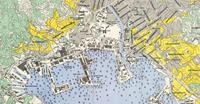 |
Sasebo 1946 (cropped) | |
 |
Sasebo airfield 1 - 21st
Naval Air Arsenal, Omura |
|
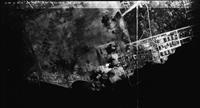 |
Sasebo airfield 2 - 21st Naval Air Arsenal, Omura | |
| CTG54 images |
Document source: Comm Amphib 4 CTG 54-1 Occup Sasebo Fukuoka 1945-11-11 |
|
 |
Sasebo ammo storage Haiki Straits CTG54-1 | |
 |
Sasebo bomb damage business section1 CTG54-1 | |
 |
Sasebo bomb damage business section 2 CTG54-1 | |
 |
Sasebo harbor 1945-09-26
CTG54-1 FULL IMAGE - shows landing designations A through V |
|
 |
Sasebo harbor entrance CTG54-1 | |
 |
Sasebo Harbor Masters Bldg CTG54-1 | |
 |
Sasebo Japanese LSMs APD CTG54-1 | |
 |
Sasebo Japanese Naval Bldg
CTG54-1 (This later became the US Navy PX, then the dependent school.) |
|
 |
Sasebo J-Frigates KAIBOKAN, Ebisu Bay CTG54-1 | |
 |
Sasebo Japanese Submarine 200-class, Ebisu Bay CTG54-1 | |
 |
Sasebo KASAGI carrier, Ebisu Bay CTG54-1 | |
 |
Sasebo LST at Supply Basin CTG54-1 | |
 |
Sasebo LSTs unload onto seaplane ramps CTG54-1 | |
 |
Sasebo Naval Aircraft Factory LSM LSTs CTG54-1 | |
 |
Sasebo Naval Base dry dock CTG54-1 | |
 |
Sasebo ships, Ebisu Bay CTG54-1 | |
 |
Sasebo ships unload at dock CTG54-1 | |
|
||
Repatriation of Japanese,
Koreans and Chinese
|
||
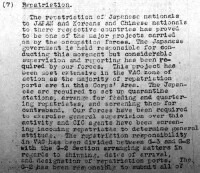  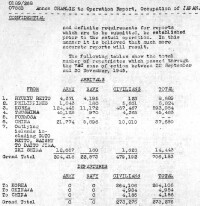 |
Repatriation of Japanese nationals to
Japan, and Korean and Chinese nationals back to their respective
countries During this initial six-week period alone, a total of 706,183 Japanese were repatriated, over 479,000 of whom were civilians. Repatriation efforts would take years, but it is estimated a total of some 3,110,000 military and 3,180,000 civilian Japanese were repatriated (1976 figures). Sasebo was one of the 18 repat ports in Japan where they disembarked, accounting for around 1.4 million Japanese. Final Repatriation Report, Nov. 1945 - excerpts from Fifth Marine Division, Occupation of Japan, 1945-09-22 to 1945-11-30 Part 2 (NOTE: The full document, Parts 1 and 2, contains detailed data on names of repat ships and ports of entry in the Kyushu area. Images to the left are from Part 1.) 40th Infantry Division, History of Evacuation and Repatriation through the Port of Pusan, Korea, 28 Sept 45 - 15 Nov 45 - contains many graphs, diagrams, sketches and photos |
|
Special Photo CollectionsCol. John T. Rooney (1917-2013) - Sailed into Sasebo circa Sep./Oct. 1945 and became the USMC Supply Officer with the 8th Service Regiment, a unit of the 5th Amphibious Corps, VAC. Photos include shots of Sasebo Navy Yard, city and rural area, Nagasaki (A-bomb damage) and other cities in Japan. (Courtesy of Greg Rooney) |
||
| Camp Sasebo APO 27 - special booklet commemorating visit by Maj. Gen. Pierson and Brig. Gen. Peploe on Aug. 11, 1954 (note this scan is incomplete). Photo of camp headquarters and chapel (high resolution) | ||
USSBS Air Objective Folder 90-36 Sasebo 90-39 Tsushima 1944-07-18
Photos 1945 - Sasebo Report No 3-a37 USSBS Index Section 7
Sasebo Harbor Ship Count 1945-04
Sasebo Photo Intel Report 563 USSBS-3-a-37 1945-04-23
Fukuoka Sasebo Nagasaki photo recon 3rd PRS 1945-05 (report date 1945-07-05)
Omura Aircraft Factory 1945-05-04
Sasebo Photo Intel Report 620 USSBS-3-a-37 1945-05-05
Sasebo - Aircraft Action Report 1945-05-13
Sasebo Kyushu No 2 Radar Anti-Aircraft Report No 1-f-18 USSBS Sec7 1945-06
Kawatana Arsenal 1945-06-12
Sasebo Bay Target Info USSBS-3-a-37 1945-06-27
Tactical Mission Reports 234-237 Okayama Sasebo Moji Nobeoka 1945-06-28,29 No 2-b-56 USSBS Section 7
Sasebo Naval Dockyards Report 1945-06-30
Sasebo Harbor Shipping Report 32 1945-07-02
Sasebo Harbor Shipping Report 34 1945-07-05
Sasebo Photo Intel Report 744 USSBS-3-a-37 1945-07-05
Sasebo Mission Summary USSBS-3-a-37 1945-07-06
Sasebo Naval Arsenal and Engineering Dept Report 1945-07-17
Special Study of Sasebo Naval Base Report 188-45 No 3-i-15 USSBS Sec 6 1945-07-20
Sasebo Harbor Shipping Report 48 1945-08-05
Sasebo Target Report 1945-08-07
Sasebo Oil Storage Report USSBS-3-a-37 1945-08-10
Sasebo Munitions Storage 1945-08-10
Ainoura Naval Recruit Training Station, G-2 Report 1945-10-13
Nagasaki Targets Report No 3-a(37) USSBS 1945-10-26
Comm Amphib 4 CTG 54-1 Occup Sasebo Fukuoka 1945-11-11
GHQ Directives re Sasebo 1947-10-25
Evacuation of Japanese to Sasebo (in Japanese)
Sasebo Naval Center - Weekly Intelligence bulletins Vol I Nos 1 to 52 14 July 1944 to 9 July 1945
Sasebo Naval Base - Weekly Intel Bulletin Vol01 No20
Sasebo Naval Dockyard - Weekly Intel Bulletin Vol01 No20
Occupation History
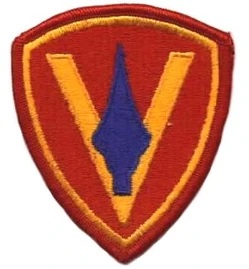 |
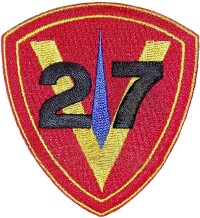 |
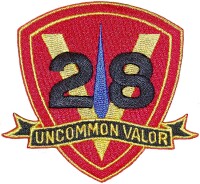 |
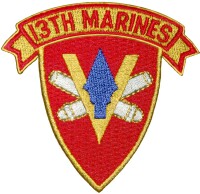 |
American B-29's destroyed nearly half of Sasebo during WWII, but the city survived. Here is the story of how Americans helped to repair the city they had nearly destroyed, and to help heal the thousands of lives there.
Just before midnight on June 28, 1945, 145 B-29's took off from Saipan Air Base on a mission to bomb Japanese cities, one of which was Sasebo, a city having one of the largest Imperial Navy installations in Japan. The incendiary bombing raid commenced just after 0130 the next day and lasted less than 90 minutes, during which time over 1,200 Japanese were killed and 42% of the city destroyed. Due to inclement weather, nearly all of the aircraft used radar targeting. Sasebo received a number of other air raids in 1945 -- April 8, April 16, April 30, July 2, July 7/8, July 31, and August 10 -- but the June bombing was the only one to inflict major damage on the city. (See above PDFs for targeting recon data starting in April 1945.)
What were the results of all these bombing raids on the Japanese military? Unknown to the Allies, the Japanese were digging in, literally turning into human gophers, putting not only their military headquarters but manufacturing, living quarters, and even schools underground (Sasebo had a huge underground complex). But the end of the war was in sight, and the atomic bombings finally taught a stubborn military leadership that surrender was the only viable option for the survival of the Japanese people. Much credit can be given to the Emperor of Japan for saving his people by his supreme decision to accept the terms of the Potsdam Declaration.
When the war came to an end, the Occupation Forces were faced with a daunting task -- how to fix a broken Japan, and deal with a broken people, a people that could potentially be full of revenge. Sasebo was in a shambles and needed basic repairs quickly. The harbor was full of damaged ships and scattered mines that presented a problem to the incoming Occupation ships. The damaged infrastructure of the city alone was appalling, and the citizens were desperate for help.
The United States 5th Marine Division Amphibious Corps (VAC), which was the first into Sasebo, was also the same division that had first fought the Japanese so fiercely on Iwo Jima. The following are excerpts from the VAC Occupation of Japan Action Report covering the period from Sept. 22 to Nov. 30, 1945 (see bottom of page for PDF).
Excellent occupation history with many photographs -- Arrival in Sasebo, Japan (Chapter 14 of The Spearhead - The World War II History Of The 5th Marine Division by Howard Conner (1950).
CHRONOLOGY:
Sept. 16 -- 5th Marine Division
departs Saipan for Japan (Task Group 54.21).
Sept. 18 -- Col. Wensinger arrives in Sasebo aboard the USS Ralph Talbot (DD 390) to meet with Japanese officers and civilian leaders.
Sept. 20 -- VAC advance party from Saipan under Col. Reaves arrives in Sasebo, along with G-2 officers and officers from the 2nd and 5th Marine Divisions and Amphibious Group 4, and meets with Col. Wensinger to complete preliminary arrangements for the occupation.
Sept. 21 -- Vice Admiral Hill with Gen. Kreuger aboard the USS Auburn, Commander 5th Amphibious Corps flagship, arrive in Sasebo and receives Col. Wensinger's report.
Sept. 22 -- USS Mount McKinley (AGC 7) docks at Sasebo Port; receives Vice Admiral Abe and four other Japanese naval officers for conference from 0800 to 0930.
Sept. 22 -- Advance landing party arrives on beach at Sasebo Naval Air Station (Green Beach) at 0900. By 1800, 10,000 troops were ashore.
Sept. 18 -- Col. Wensinger arrives in Sasebo aboard the USS Ralph Talbot (DD 390) to meet with Japanese officers and civilian leaders.
Sept. 20 -- VAC advance party from Saipan under Col. Reaves arrives in Sasebo, along with G-2 officers and officers from the 2nd and 5th Marine Divisions and Amphibious Group 4, and meets with Col. Wensinger to complete preliminary arrangements for the occupation.
Sept. 21 -- Vice Admiral Hill with Gen. Kreuger aboard the USS Auburn, Commander 5th Amphibious Corps flagship, arrive in Sasebo and receives Col. Wensinger's report.
Sept. 22 -- USS Mount McKinley (AGC 7) docks at Sasebo Port; receives Vice Admiral Abe and four other Japanese naval officers for conference from 0800 to 0930.
Sept. 22 -- Advance landing party arrives on beach at Sasebo Naval Air Station (Green Beach) at 0900. By 1800, 10,000 troops were ashore.
INITIAL OBJECTIVES:
1. Billeting for troops -- rid
buildings of vermin and lice; repair or install plumbing, repair
electrical equipment
2. Sanitation -- decontaminate and purify water supply (night soil use a problem)
3. Communications -- establish rapid, adequate radio and wire communications
4. Supply -- repair railway lines and depots (road conditions very inadequate)
5. Disposal of all Japanese war supplies and materiel
6. Verify Japanese forces have completely demobilized
7. Supervise repatriation of Japanese troops and also outgoing Chinese, Korean and Formosan displaced personnel
2. Sanitation -- decontaminate and purify water supply (night soil use a problem)
3. Communications -- establish rapid, adequate radio and wire communications
4. Supply -- repair railway lines and depots (road conditions very inadequate)
5. Disposal of all Japanese war supplies and materiel
6. Verify Japanese forces have completely demobilized
7. Supervise repatriation of Japanese troops and also outgoing Chinese, Korean and Formosan displaced personnel
Though Sasebo was primarily a naval repair base, it became a very busy commercial port in the beginning of the Occupation, and by November 30, some 432 vessels of all types were anchored in Sasebo Bay.
The Corps was paid in Japanese yen, the rate being ¥15/$.
Supplying food and shelter to Sasebo citizens was of utmost importance. The Black Market was a problem that was continually being addressed, but, the entire city having been under the employment and guidance of the military, the lack of initiative and organization on the part of the Japanese was a great barrier to their own rehabiliation.
Upon arrival in Sasebo, the Corps had 126 military government officers who immediately set up the military government office which included a legal, administrative, agriculture, transportation, salvage, fishery and agriculture sections.
The Provost Marshall crime reports for the first full month of October 1945 show the total number of arrests and violations at 2,160 cases, the majority being for AWOL and improper uniform; there was only one murder-rape case during the entire month (the next month shows only one murder and one rape, incidentally, with the majority of cases being for AWOL and desertion).
Notes:
From 5th Amphibious Corps Occupation of Japan NOV1945 Part 1:P. 282 quotes re how everything
went smoothly
Images of 409~411 - Naval District units, personnel, strengths
Images of 420~421 - Fortress & NAS weapons, etc. found
"Civilian population has been acquiescent and docile with little expression of emotion or show of interest. There has been no evidence of unrest and no political trends have been noted." -- G-2 Periodic Report No. 1, Sept. 22, 1945
p420 - Sept. 23, 1945 - "Military authorities have complied in every respect with all prescribed requirements and have cooperated to the fullest extent without making any attempt at evasion or violation of Allied terms. There have been no known acts of violence or destruction of arms and equipment."
Images of 422~423 - Sasebo conditions (from G-2 Periodic Report No. 1, Sept. 22, 1945)
p. 428 - Map of "Coastal Defense and Anti-Aircraft Positions"
424, 425 - Military leaders and units, asst. info; Girls School used as combined HQ; Pre-Occup org of Sasebo Navy
-----
"Pre-Occupation Organization of Japanese Naval Units in the SASEBO Naval District. According to Japanese representatives, the defense of the SASEBO area was an entirely naval affair. All forces in the area were under command of Vice Admiral ABE. The principal units were as follows:
p433 - Destruction of documents by Japanese prior to our landings:
429 - Inventories of asst. arms, etc. found
431 - Military Police org
435 - Secret & civic orgs
436 - POW camp in Emukae
439~ - Ainoura Naval barracks and local strengths
440 - Heavy Artillery unit history
p436 - "Vice President of the SHINWA BANK (SASEBO), MAKI, Kenichi, states that in his opinion the occupation has been running very smoothly, that the Japanese people have noticed this fact, and that they are more than willing to cooperate with the occupation forces.
"It is reported that the Japanese people in SASEBO would like to talk freely but that they still fear the Japanese government since no official word as to the attitude of that government toward freedom of speech has been received in this area."
p444 - General trend in newspapers (Nishinippon, Nagasaki and Mainichi) "indicate favorable Japanese impression of behavior of American troops in the NAGASAKI-SASEBO areas. The papers also indicate appreciation of the humanitarian efforts of American doctors in the NAGASAKI area." No doubt the doctors were busily engaged in treating A-bomb victims.
p449 - Sept. 27, 1945 "Editorials in local newspapers continue to ask for public cooperation with the occupation forces, and suggest that future Japanese governmental policy be based upon constitutional law giving power to the people instead of to the army and navy. They have also emphasized that the civilian population has been particularly impressed by our mechanized power and now understand the part it played in the defeat of Japan."
Images of 409~411 - Naval District units, personnel, strengths
Images of 420~421 - Fortress & NAS weapons, etc. found
"Civilian population has been acquiescent and docile with little expression of emotion or show of interest. There has been no evidence of unrest and no political trends have been noted." -- G-2 Periodic Report No. 1, Sept. 22, 1945
p420 - Sept. 23, 1945 - "Military authorities have complied in every respect with all prescribed requirements and have cooperated to the fullest extent without making any attempt at evasion or violation of Allied terms. There have been no known acts of violence or destruction of arms and equipment."
Images of 422~423 - Sasebo conditions (from G-2 Periodic Report No. 1, Sept. 22, 1945)
p. 428 - Map of "Coastal Defense and Anti-Aircraft Positions"
424, 425 - Military leaders and units, asst. info; Girls School used as combined HQ; Pre-Occup org of Sasebo Navy
"The bulk of the enemy's forces
in the SASEBO area both before the end of the war and at the present
time are naval. None of the pre-occupation naval forces remain in
existance as organized units. Currenlty the naval troops are organized
into three temporary groups: Security police (HOANTAI), Service and
Shipping. The first group are acting as guards on all naval
installations. The second group are provisioning the HOANTAI. The third
group is being detained near KAWATANA as potential crews for shipping
removed from SASEBO Harbor to OMURA Bay. All naval ground personnel in
the SASEBO area are under the direct command of Vice Admiral ABE, Koso.
"Within the 10-mile restricted zone are a total of 736, about half of whom are guards and the remainder service personnel. Vice Admiral SUGIYAMA, Rokuzo and VIce Admiral ABE have established a small combined headquarters in the Girl's School in SASEBO for liaison and demobilization purposes. Also within the 10-mile restricted zone are 25 guard and liaison personnel from 951st Naval Air Group, 14 similar Army personnel under command of 1st Lt. SUGIMOTO, Masajiro from the SASEBO Heavy Artillery Regiment Replacement Unit are stationed in the barracks of the original two companies moved to KOKURA on 17 September. A small MP detachment commanded by Sgt. YOSHINAGA, Seisaburo remains in SASEBO with branches at AINOURA, HARIOSHIMA, YOSHIE, and HAKATA -- all small localities in the SASEBO area. The bulk of the original SASEBO MP Unit have moved to KOKURA."
"Within the 10-mile restricted zone are a total of 736, about half of whom are guards and the remainder service personnel. Vice Admiral SUGIYAMA, Rokuzo and VIce Admiral ABE have established a small combined headquarters in the Girl's School in SASEBO for liaison and demobilization purposes. Also within the 10-mile restricted zone are 25 guard and liaison personnel from 951st Naval Air Group, 14 similar Army personnel under command of 1st Lt. SUGIMOTO, Masajiro from the SASEBO Heavy Artillery Regiment Replacement Unit are stationed in the barracks of the original two companies moved to KOKURA on 17 September. A small MP detachment commanded by Sgt. YOSHINAGA, Seisaburo remains in SASEBO with branches at AINOURA, HARIOSHIMA, YOSHIE, and HAKATA -- all small localities in the SASEBO area. The bulk of the original SASEBO MP Unit have moved to KOKURA."
-----
"Pre-Occupation Organization of Japanese Naval Units in the SASEBO Naval District. According to Japanese representatives, the defense of the SASEBO area was an entirely naval affair. All forces in the area were under command of Vice Admiral ABE. The principal units were as follows:
SASEBO HOBITAI (Defense Unit):
Duties were mine laying and mine sweeping.
SASEBO Combined SMLF: An infantry force of 20,000 deployed within a 15-mile radius of SASEBO. Subordinate units were the 1st, 2nd, 3rd and 4th SMLF's.
SASEBO area AA Defense Unit (CHIKIN HOKUTAI): Manned all AA guns in the SASEBO area. Strength about 5,000.
SASEBO Naval Guard Force: Manned CD guns in the SASEBO area. Unit was organized into "barracks" located at SASEBO, AINOURA, HARIO and KAWATANA. Unit was commanded by Captain YAMADA.
Details of Suicide Boat Units have been reported to the 5th Amphibious Force and will not be covered in this report."
Sept. 23, 1945 - 100 suicide boats were found in the SASEBO area....
[For detailed information on these Shinyo suicide boats, see this report, USNTMJ Ship and Related Targets, Japanese Suicide Craft 1946-01-15. The other suicide craft, the Kaiten, was considered much more viable and therefore was produced in greater quantities. For more information, read the entry for June 10, 2010, on this page; see this map link for the Kaiten Memorial Museum on Ozushima, near Tokuyama in southern Honshu; also this article.]
[Re the above-mentioned Hario -- Like the repatriation of Allied servicemen and women (including POWs and civilian internees), millions of Japanese were brought back to their homeland. Among the 15 regional repatriation centers, Sasebo saw the 2nd highest number of returnees, nearly 1.4 million Japanese (the highest was Hakata Port in Fukuoka). The Sasebo Regional Repatriation Center was located in Hario, where the Huis ten Bosch Theme Park is now situated. The US Navy currently has a base-housing facility just adjacent to this theme park. Per this book, When Empire Comes Home: Repatriation and Reintegration in Postwar Japan by Lori Watt (2009):
"The Uragashira Repatriate Memorial Peace Museum is located at the former quarantine station of the Sasebo Regional Repatriation Center because the grounds of the center proper were occupied by Huis ten Bosch, a manicured theme park and living facility based on an imagined seventeenth-century Dutch village. Huis Ten Bosch Resort and Theme Park."
There is also a memorial site at the Honbutsuji Temple Kama Cemetery (at the southeast corner of the Navy Base housing), where nearly 7,000 Imperial Japanese soldiers, including over 2,000 Japanese repatriates, are interred.]
SASEBO Combined SMLF: An infantry force of 20,000 deployed within a 15-mile radius of SASEBO. Subordinate units were the 1st, 2nd, 3rd and 4th SMLF's.
SASEBO area AA Defense Unit (CHIKIN HOKUTAI): Manned all AA guns in the SASEBO area. Strength about 5,000.
SASEBO Naval Guard Force: Manned CD guns in the SASEBO area. Unit was organized into "barracks" located at SASEBO, AINOURA, HARIO and KAWATANA. Unit was commanded by Captain YAMADA.
Details of Suicide Boat Units have been reported to the 5th Amphibious Force and will not be covered in this report."
Sept. 23, 1945 - 100 suicide boats were found in the SASEBO area....
[For detailed information on these Shinyo suicide boats, see this report, USNTMJ Ship and Related Targets, Japanese Suicide Craft 1946-01-15. The other suicide craft, the Kaiten, was considered much more viable and therefore was produced in greater quantities. For more information, read the entry for June 10, 2010, on this page; see this map link for the Kaiten Memorial Museum on Ozushima, near Tokuyama in southern Honshu; also this article.]
[Re the above-mentioned Hario -- Like the repatriation of Allied servicemen and women (including POWs and civilian internees), millions of Japanese were brought back to their homeland. Among the 15 regional repatriation centers, Sasebo saw the 2nd highest number of returnees, nearly 1.4 million Japanese (the highest was Hakata Port in Fukuoka). The Sasebo Regional Repatriation Center was located in Hario, where the Huis ten Bosch Theme Park is now situated. The US Navy currently has a base-housing facility just adjacent to this theme park. Per this book, When Empire Comes Home: Repatriation and Reintegration in Postwar Japan by Lori Watt (2009):
"The Uragashira Repatriate Memorial Peace Museum is located at the former quarantine station of the Sasebo Regional Repatriation Center because the grounds of the center proper were occupied by Huis ten Bosch, a manicured theme park and living facility based on an imagined seventeenth-century Dutch village. Huis Ten Bosch Resort and Theme Park."
There is also a memorial site at the Honbutsuji Temple Kama Cemetery (at the southeast corner of the Navy Base housing), where nearly 7,000 Imperial Japanese soldiers, including over 2,000 Japanese repatriates, are interred.]
| Lieutenant Colonel Jin, a
Staff Officer at General Headquarters, and later acting as an
Intelligence Officer on Okinawa from where he escaped in a small boat,
explained the reasons for the use of suicide units: I know that you in the
United States found it more difficult to manufacture crews than planes
and did everything possible to rescue the crews, but our strategy was
aimed solely at the destruction of your fleet and transport fleet when
it landed in Japan. It was not very difficult to manufacture
second-rate planes, that is, makeshift planes, and it was not difficult
to train pilots for just such a duty; and since pilots were willing, we
had no shortage of volunteers. At no time did we run out of pilots to
man these planes, but our big difficulty was rather a question of
manufacturing than a shortage of crews.
But, I wish to explain something, which is a very difficult thing and which you may not be able to understand. The Japanese, to the very end, believed that by spiritual means they could fight on equal terms with you, yet by any other comparison it would not appear equal. We believed our spiritual confidences in victory would balance any scientific advantages and we had no intention of giving up the fight. It seemed to be especially Japanese. Also, may I point out another thing. You call our kamikaze attacks "suicide" attacks. This is a misnomer and we feel very badly about your calling them "suicide" attacks. They were in no sense "suicide." The pilot did not start out on his mission with the intention of committing suicide. He looked upon himself as a human bomb which would destroy a certain part of the enemy fleet for his country. They considered it a glorious thing, while suicide may not be so glorious. -- Mission Accomplished: Interrogation of
Japanese Leaders of WWII, 1946 (p. 34) |
p433 - Destruction of documents by Japanese prior to our landings:
Extensive reconnaissance by 5th
MarDiv reveals that careful and virtual complete destruction of all
documents in the SASEBO Aircraft Factory and NAS was completed sometime
prior to our landing.............
Many intelligence targets in Sasebo were placed under investigation. These included:
Naval Air Station and 21st Naval Air Depot
Sasebo Navy Yard and Naval HQ
Sasebo Aircraft factory
Naval District and Personnel Offices
Research Laboratory
Underground command posts (with operable radios)
Sasebo Fortress Artillery Battalion HQ
Naval drafting office
City hall
Railroad station
Post office
Telegraph exchange
Police station
Newspaper offices
Hoko HQ
Underground machine shops
Radar and repair installations
Assembly plants buildings (with 90 planes in production)
Many intelligence targets in Sasebo were placed under investigation. These included:
Naval Air Station and 21st Naval Air Depot
Sasebo Navy Yard and Naval HQ
Sasebo Aircraft factory
Naval District and Personnel Offices
Research Laboratory
Underground command posts (with operable radios)
Sasebo Fortress Artillery Battalion HQ
Naval drafting office
City hall
Railroad station
Post office
Telegraph exchange
Police station
Newspaper offices
Hoko HQ
Underground machine shops
Radar and repair installations
Assembly plants buildings (with 90 planes in production)
429 - Inventories of asst. arms, etc. found
431 - Military Police org
435 - Secret & civic orgs
436 - POW camp in Emukae
439~ - Ainoura Naval barracks and local strengths
440 - Heavy Artillery unit history
p436 - "Vice President of the SHINWA BANK (SASEBO), MAKI, Kenichi, states that in his opinion the occupation has been running very smoothly, that the Japanese people have noticed this fact, and that they are more than willing to cooperate with the occupation forces.
"It is reported that the Japanese people in SASEBO would like to talk freely but that they still fear the Japanese government since no official word as to the attitude of that government toward freedom of speech has been received in this area."
p444 - General trend in newspapers (Nishinippon, Nagasaki and Mainichi) "indicate favorable Japanese impression of behavior of American troops in the NAGASAKI-SASEBO areas. The papers also indicate appreciation of the humanitarian efforts of American doctors in the NAGASAKI area." No doubt the doctors were busily engaged in treating A-bomb victims.
p449 - Sept. 27, 1945 "Editorials in local newspapers continue to ask for public cooperation with the occupation forces, and suggest that future Japanese governmental policy be based upon constitutional law giving power to the people instead of to the army and navy. They have also emphasized that the civilian population has been particularly impressed by our mechanized power and now understand the part it played in the defeat of Japan."
SEE THE FOLLOWING PDF FOR EXCERPTS FROM THE REPORT:
Bookmarks for original archival documents: PART 1 -- PART 2
For a shorter summary, see The United States Marines in the Occupation of Japan by Henry Shaw (1969), containing numerous references to Sasebo. Also available here.
"Japanese Attitude Toward the Occupation" - found on pages 68-70 in this document re the occupation of the Osaka area, 98th Infantry Division
See also SECURING THE SURRENDER: Marines in the Occupation of Japan (Sasebo-Nagasaki Landings) by Charles R. Smith
|
These excerpts from US Naval Cruise Books contain a fascinating history of the occupation of Sasebo and Nagasaki as seen from the eyes of American sailors. Full of photos and humorous quips. USS Saga Shannon
Cruise Book (Sept. 9 to Oct. 17, 1945) - first Allied ship into
Sasebo after end of war; includes initial minesweeping activities and a
section on Nagasaki
USS Wichita Cruise Book (Sept. 11 to Nov. 5, 1945) - flagship of task group assigned to evacuate Allied POWs; contains long section on Nagasaki, including evacuation of Allied POWs (9,041 persons, including 1,512 Americans, 3,662 Dutch and Javanese, 2,667 British and 1,060 Australians) USS Santa Fe Cruise Book (Sept. 21 to Oct. 8, 1945) - includes photos of Tokyo USS Karnes Cruise Book (Sept. 22, 1945) USS Mount McKinley Cruise Book (Sept. to Nov. 1945) - includes surrender conference; many Japanese warships identified in harbor area, including carriers Kasagi and Junyo USS Tazewell Cruise Book (from Oct. 23, 1945) USS Thomas Jefferson Cruise Book (July to Nov. 1945) USS Pondera Cruise Book (Nov. 28 to Dec. 5, 1945) USS Springfield Cruise Book (1945) USS Mobile Cruise Book Part 1 - Part 2 (1945) - includes photos of "Magic Carpet" Operation, A-bomb damage in Nagasaki, and Allied POWs (for more on Magic Carpet, see The Magic Carpet That Brought Everybody Home) USS Boxer Cruise Book (1950) USS Leyte Cruise Book (Oct. 30 to Nov. 4, 1950; Dec. 26 to Jan. 7, 1951) USS Saint Paul Cruise Book (1950-1951) USS Manchester Cruise Book (Oct. 4, 1950 to Feb. 13, 1951) USS Princeton Cruise Book (1951) USS Princeton Cruise Book (1950-1952) USS Lowry Cruise Book (1952) USS Epping Forest Cruise Book (1953) USS New Jersey Cruise Book (1953) USS Bremerton Cruise Book (1954) USS Oriskany Cruise Book (1954) USS Boxer Cruise Book (1956) USS Princeton Cruise Book (1957-1958) USS Toledo Japan photos Part 1 - Part 2 - Part 3 (1958) - good collection of photos from Kyushu to Hokkaido, many in color USS Kearsarge Cruise Book (1959-1960) 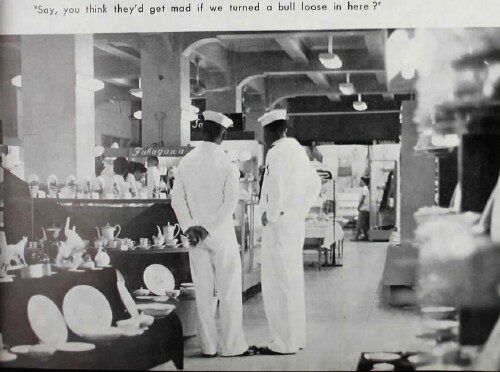 Asst. Cruise Book excerpts for the following ships: 1951 USS Brown
1952 USS Bataan 1953 USS Mispillion 1953 USS Noble 1953 USS Point Cruz 1953 USS Preston 1953 USS Theodore E. Chandler 1954 USS Montrose 1954 USS Rochester 1954 USS Stormes 1954 USS William Seiverling 1956 USS Bon Homme Richard 1956 USS Columbus 1957 USS Bennington 1957 USS John S. McCain 1957 USS Whetstone 1959 USS Ranger 1959 USS Floyd B Parks 1959 USS Nicholas 1959 USS Shangri-La 1959 USS St. Paul 1959 USS Toledo 1959 USS Yorktown 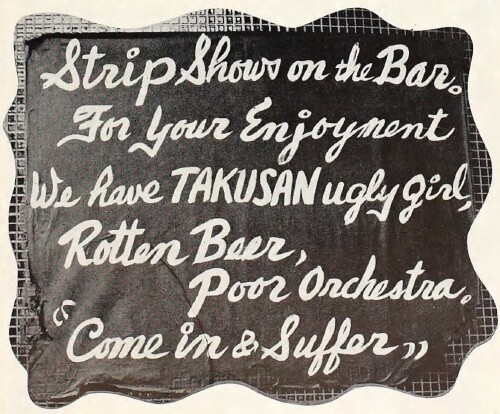 |


